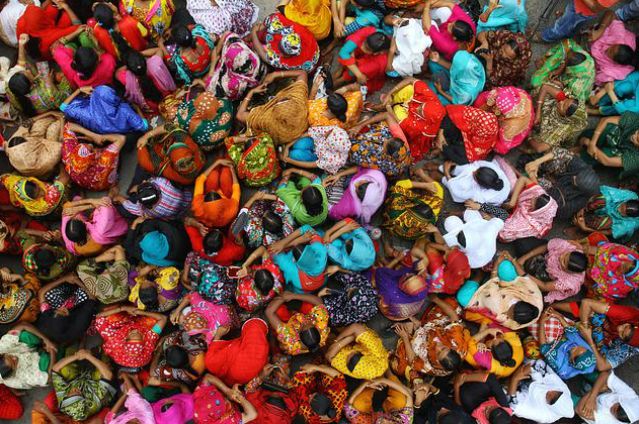
Can you imagine a world without human beings? Who would have utilised the resources and created a social and cultural environment? The people are important to develop the economy and the society. The people make and use resources and are themselves resources with varying quality. Coal was a piece of rock until people were able to invent technology to obtain it and make it a 'resource'. Natural events, like a flood or a Tsunami, become a 'disaster' only when they affect a crowded village or a town.
Hence, the population is the pivotal element in social studies. It is the point of reference from which all other elements are observed and from which they derive significance and meaning. Resources calamities' and 'disasters' are all meaningful only in relation to human beings. Their numbers, distribution. growth and characteristics or qualities provide the basic background for understanding and appreciating all aspects of the environment.
Human beings are producers and consumers of the earth's resources. Therefore, it is important to know how many people are there in a country, where they live, how and why their numbers are increasing, and their characteristics. The census of India provides us with information regarding the population of our country.
We are primarily concerned with three major questions about population:
- Population size and distribution: How many people are there and where are they located?
- Population growth and processes of population change: How has the population grown and changed through time?
- Characteristics or qualities of the population: What are their age, sex composition, literacy levels, occupational structure, and health conditions?
Rapid population growth makes it more difficult for low-income and lower-middle-income countries to afford the increase in public expenditures on a per capita basis that is needed to eradicate poverty, end hunger, and malnutrition, and ensure universal access to health care, education, and other essential services
Population growth will lead to economic growth with more people able to produce more goods. It will lead to higher tax revenues which can be spent on public goods, such as health care and environmental projects. The obvious evaluation is to say, the crucial thing is not GDP, but GDP per capita.
The relationship between population growth and economic growth is controversial. This article draws on historical data to chart the links between population growth, growth in per capita output, and overall economic growth over the past 200 years. Low population growth in high-income countries is likely to create social and economic problems while high population growth in low-income countries may slow their development. International migration could help to adjust these imbalances but is opposed by many. Drawing on economic analyses of inequality, it appears that lower population growth and limited migration may contribute to increased national and global economic inequality.
Identifying the size, structure, and distribution of a population is essential for planning development-related works. Without knowing where people are located, governments and policymakers cannot improve/ expand access to health, transportation, energy, and other services.
Human population growth challenges efforts toward sustainability. People who are concerned about the environment, development, and sustainability are in a position to stress the importance of the human population and to encourage people to choose small family size
Population data is essential for planning purposes. Any country needs to know the size and composition of its population – around age and sex structure, among other factors. Knowledge about distribution is important, too: where do people live and work? That helps to plan how many schools, clinics, hospitals, and jobs a country needs.
